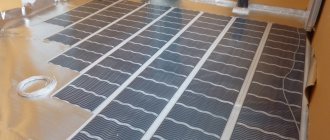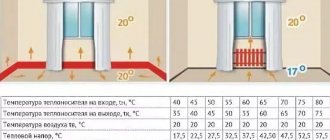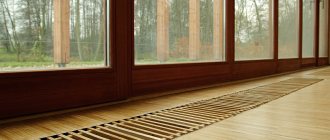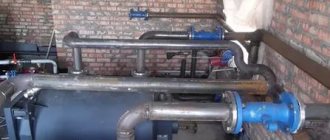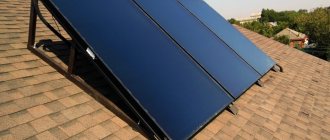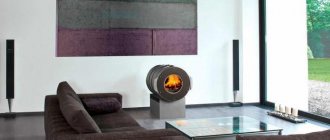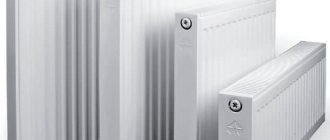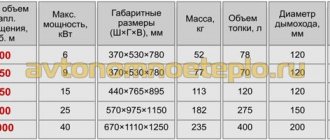When installing a traditional heating system, problems with radiators constantly arise.
I would like to hide them somewhere away so that they do not stand out and spoil the interior with their appearance. What if we initially made a system in which batteries would not be needed at all? And we are not talking about heated floors here.
What is there in every room that doesn’t catch your eye at all? This is a plinth. So why not hide the heating in it, the manufacturers thought and launched the so-called warm baseboard onto the market.
It looks quite a bit different from the usual one. Its height ranges from 14 to 20cm, width about 3cm. With such dimensions, such a system will fit into any interior without any problems.
Is this heat source enough to fully heat a house or apartment? Quite. Despite its small size, do not forget about its length.
So, in a room up to 20 m2, when installing a plinth along three walls, the total area of such a heater reaches 2 m2. At the same time, it is not these square meters that emit heat, but something else.
To find out what exactly, let's take a closer look at the operating principle of a warm baseboard and find out all the details about its effectiveness.
Warm baseboard system
The idea of such an alternative heating method arose at the beginning of the last century, but was not widely implemented in practice. Due to the high costs, a small number of home building owners could afford to install a warm baseboard system. Modern technologies have made their own adjustments to their design.
The coolant in warm baseboards can be heated to a temperature of 70 degrees Celsius. Despite this, the optimal heating mode is considered to be maintaining a temperature on the surface of the baseboards no higher than 40 degrees. This is done in order not to spoil the decorative coating of the baseboards.
Operating principle
Heating rooms using warm baseboards differs from radiator heating. The highly heated surface of the elements of the latter system transmits its heat into the surrounding space. Warm baseboards give off some of their heat to the walls, turning them into barriers against cold.
Heating baseboards create the effect of heated air “sticking” to the surfaces surrounding them.
By installing the baseboard around the perimeter of the rooms, their uniform heating is ensured. Cold air penetrates through the gratings of the baseboards to the heating elements, heats up and slowly begins to rise upward.
Types of warm skirting boards and their features
Existing heating systems are divided into two main types:
Electrical
Mermen
The first ones consist of parallel-connected TOENs with a power of 220 W. Their operation is adjusted using thermostats. They can be electronic or electromechanical. The maximum heating temperature of heating elements in the heating system is 600C. They are mounted inside the lower copper pipes. A cable is inserted into the top ones, supplying voltage to the heating elements.
Water systems for warm baseboards are equipped with a distribution manifold. It is connected to the main system by polyethylene pipes. They heat the liquid. The maximum heating temperature of the coolant is 850C. The liquid filling volume of the system should be 0.35 liters per 1 linear meter.
Advantages and disadvantages
The advantage of heating baseboards is increased heat transfer with minimal heat loss in the system. They are safe to use and cannot cause fire in objects located next to them. The heating system prevents the formation of condensation, mildew and mold on the walls.
Among other advantages:
- equipment versatility;
- aesthetic appearance;
- durability;
- ease of operation.
Expert opinion
Grebnev Vadim Savelievich
Heating system installer
The disadvantages of warm baseboards include the high cost of installation. Their operation without breakdowns largely depends on maintaining a certain temperature of the coolant in the system.
A few final words...
Believe me, you should not always trust the colorful pictures drawn by manufacturers or sellers of certain products. It is clear that they are always interested people, and are often capable of either lying or embellishing this or that information for their own purposes.
Just for fun, go to the websites of manufacturers of warm baseboards, no matter which ones. With a probability close to 100%, there will be a whole array of seemingly very convincing calculations, with references to some phenomena of “sticking” of warm air flows to vertical surfaces, named after some Romanian pilot, to the theory of energy transformation, to turning cold and damp walls into sources of life-giving radiant heat, and much more. With final promises of energy savings from 30% to (I’m not lying) five times! We also encountered this - 200 W of heat with a real consumption of 40 W of electrical energy. Wow, how great!
Such reasoning can easily be broken not only by a certified heating engineer, but even by an ordinary school physics teacher. At least from the standpoint of the inviolability of the well-known law of conservation of energy. Read it - it's interesting...
Warm baseboards have a right to exist, and can be very convenient and effective. But you shouldn’t expect miracles from them.
Expert opinion: Afanasyev E.V.
Chief editor of the Stroyday.ru project. Engineer.
Understand correctly - the author does not at all advocate that warm baseboards are bad, ineffective, and should be “consigned to oblivion.” Not at all! Such heating devices have a number of important advantages. First of all, they are inconspicuous, and for some interiors this is very important. They are compact and can be placed along the entire free perimeter of the room, thereby distributing the heat entering the room as evenly as possible. They can really help dry up the ever-wet external walls and get rid of condensation on the windows, especially if the windows, as they say, are on the floor. In addition, the baseboards will create some kind of thermal curtain, and the cold from the window will not penetrate deep into the room.
You can find other arguments in favor. But you don’t need to believe in the fabulous effects of huge energy savings from the start. It’s just that the inevitable early disappointment will be all the more bitter.
And, by the way, in terms of the efficiency of distribution of generated heat, baseboard heaters are still inferior to “warm floors”. So that…
Calculation of warm baseboard
The calculation of the length of heating baseboards is based on room heating standards. The standard indicator for living rooms is 60-100 W of heat per 1 sq. m. It is relevant for central Russia. For northern regions, the room heating rate increases to 150-200 W.
In addition to the regional amendment, other adjustments must be made:
- the appearance of the glazing;
- wall thickness;
- number of window and door openings, etc.
After determining the heating rate, this indicator is multiplied by the square footage of the room that is planned to be heated. The resulting value is divided by the amount of heat generated by 1 linear meter of thermal baseboard.
Installation Features
So, it is clear that thermal baseboards are installed around the perimeter of the room. There is no need to cover the entire length. It is enough to calculate the required number of components to achieve optimal heating of the room. This is influenced by several parameters in combination, naturally, with the area of the heated room.
It is also very important to decide on the type of system:
- electric;
- liquid (antifreeze, water).
How to install a warm baseboard yourself
Installation of a water heating system begins with the installation of a collector. Two pipes are connected to it (one for supply, the other for coolant intake), powered by the heating unit.
Correct operation of the equipment is only possible if the system maintains a constant pressure of at least 3 atm.
The maximum length of the circuit cannot exceed 12.5-15 m. In cases where a longer circuit is required, an additional collector is installed. The pipes are laid around the perimeter of the room in a prepared base (plank) with thermal insulation.
A gap of at least 1 cm is left between the pipes and the floor. This prevents overheating of the system elements. The modules are fastened using fittings. After installing the pipes, the operation of the system is checked, after which they are closed with a front panel.
The electric heating system is connected directly to the electrical panel. For these purposes, it must be equipped with a separate machine. Wires installed in the system must have a cross-section of at least 2.5 mm. Each circuit has its own thermostat and temperature sensor. Heating baseboards should be located at least 1.5 cm from the wall.
Rating of the best warm skirting boards
Budget models
"Cozy" 1050 mm
Country of origin: Russia. The electronically controlled model is designed for installation in small spaces. Made of aluminum. Heater type – electric. Well suited for installation under tall windows.
Characteristics:
- Power – 300 W;
- section length – 1050 mm.
Advantages:
- wide range of body color options;
- presence of a thermostat for adjustment.
Flaw:
- cannot be installed in rooms with high humidity.
"Orion" 530 mm
Country of origin: Russia. The model can be used for installation around the perimeters of swimming pools, in greenhouses, cabins, on balconies with French glazing, etc. The body has a special anti-corrosion coating. Management is electronic. Heater type – electric.
Characteristics:
- Power – 75 W;
- section length – 530 mm.
Advantages:
- high efficiency;
- efficiency;
- anti-corrosion resistance.
Flaw:
- no thermostat.
Mid-priced models
"Orion 1 Cedar"
Country of origin: Russia. The model is not afraid of moisture. It has a wide range of color options for products, allowing them to be used as room decor. The high efficiency of the system allows it to be used for heating large areas. Management is electronic. Heater type – electric. The material of manufacture is aluminum.
Characteristics:
- Power – 150 W;
- section length – 1000 mm.
Advantages:
- ease of installation of the structure;
- safety;
- high efficiency.
Flaw:
- no thermostat.
TP-2
Country of origin: Russia. The water type model can be used for main and auxiliary heating. It has an attractive design that harmonizes with various types of interior spaces. The heat exchanger of the product is made of stainless steel, the box is made of aluminum.
Characteristics:
- nominal pressure – 20 Atm.;
- carrier volume in the system – 0.5 l/m.
Advantages:
- ease of installation;
- safety;
- high efficiency.
Flaw:
- If the system is installed incorrectly, air pockets may form.
Premium models
"Thermodul Combi"
Country of origin: Italy. The model has a combined operating mode: water and electric. The heating system is controlled fully automatically using a thermostat. Execution material – aluminum.
Characteristics:
- power – 650 W;
- section length – 1000 mm.
Advantages:
- combined operating mode;
- reliability of operation;
- long service life;
- safety.
Flaw:
- Equipment requires professional installation.
Instead of an epilogue
An analysis of the Russian market for warm skirting boards showed that domestic buyers prefer domestic models. This is all thanks to the fact that searching for components for them is not burdensome, and some samples can be assembled independently. And even their apparent simplicity does not make them something of low quality in the eyes of a potential user. On the contrary, most Russian models are well balanced in terms of price/quality parameters. At the same time, foreign samples can cost many times more (or even tens of times), however, even due to their perfection and the use of new technologies in them, they are not in particular demand in the Russian Federation.
Which heating baseboard to choose for heating
When purchasing heated floors, you should pay attention to the product manufacturers. It is better to purchase skirting boards from well-known brands with a long history.
Among the manufacturers that have proven themselves to be of good quality equipment:
- "Mr. Tectum"
- "Rehau"
- "Besta Board".
When installing electric heated skirting boards, it is necessary to first assess the need for electricity consumption and the possibility of connecting the equipment to the network. An important factor determining the choice of heating baseboard is the material of the walls. The typical characteristics of the premises are also taken into account.
Adviсe
When installing water-type heating baseboards in residential areas for heating, it is important not to exceed the maximum permissible circuit length. It should be no more than 15 m. If you want to make a circuit longer than 15 m, you need to break it into several autonomous parts.
Expert opinion
Grebnev Vadim Savelievich
Heating system installer
Installation of a heated floor heating system involves installing its own separate circuit in each room. Large premises are heated by several circuits.
Advantages and disadvantages
Differences from other heating systems in the principle of operation of a warm baseboard give it tangible advantages.
Pros:
- Elimination of dampness and mold on heated walls.
- Uniform heating of the room, which significantly reduces the risk of drafts.
- Accelerated set temperature throughout the entire volume, compared to systems using point sources (radiators).
- Reduced heat loss due to the formation of a more heated layer of air along the walls.
- Ability to work with low-temperature sources.
- Compatible with all types of flooring and wall finishing.
Minuses:
- Difficulty in installing supply lines. And this applies to both the electric and water versions. For the first, it is advisable to organize a separate power line with switching devices. For the second, with a significant estimated length of the main line, several circuits and a collector unit will have to be installed.
- Relative high cost of the system. It is explained not even by the limited supply on the market (although this plays a role), but by the high cost of the components of the heating module.
